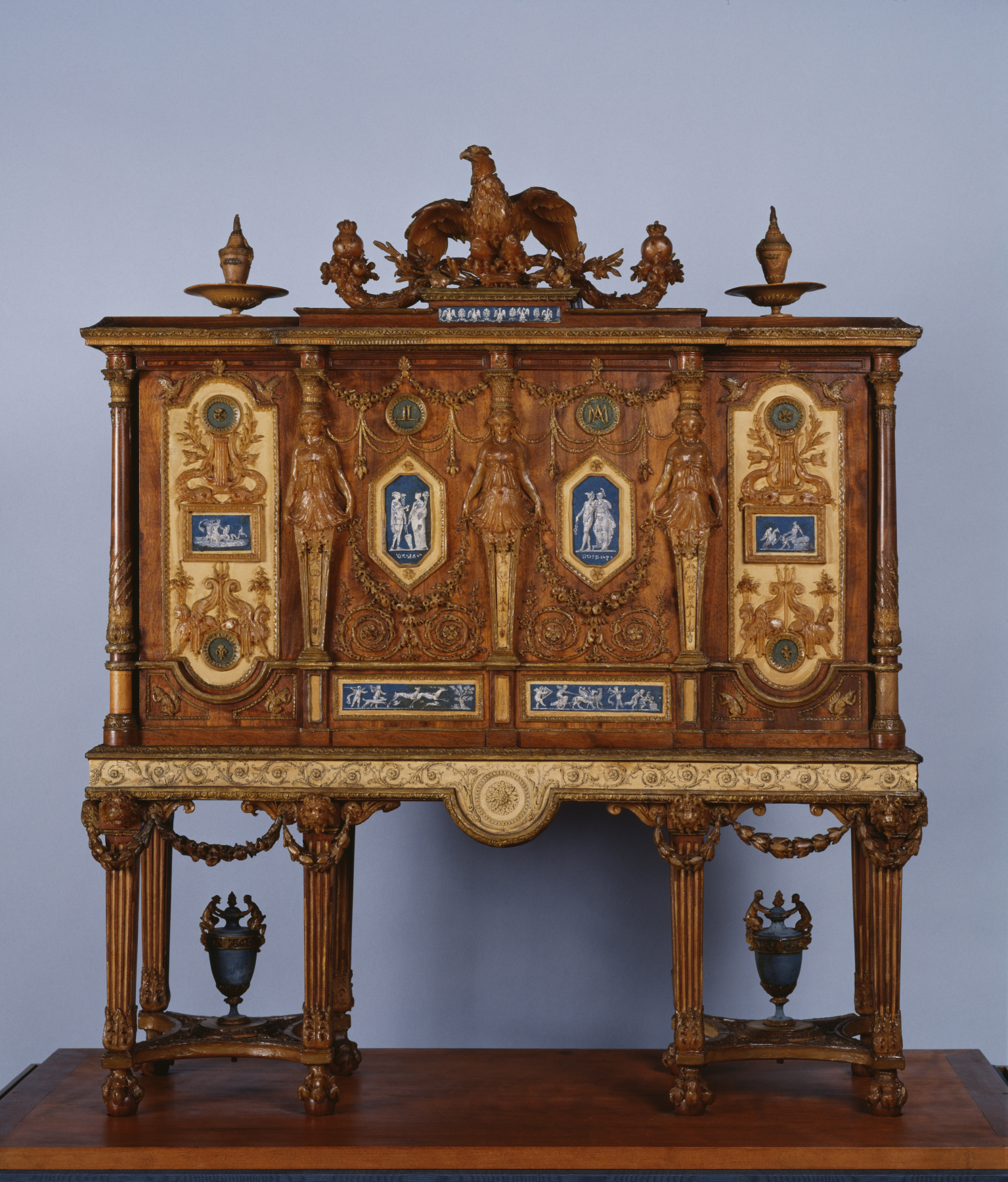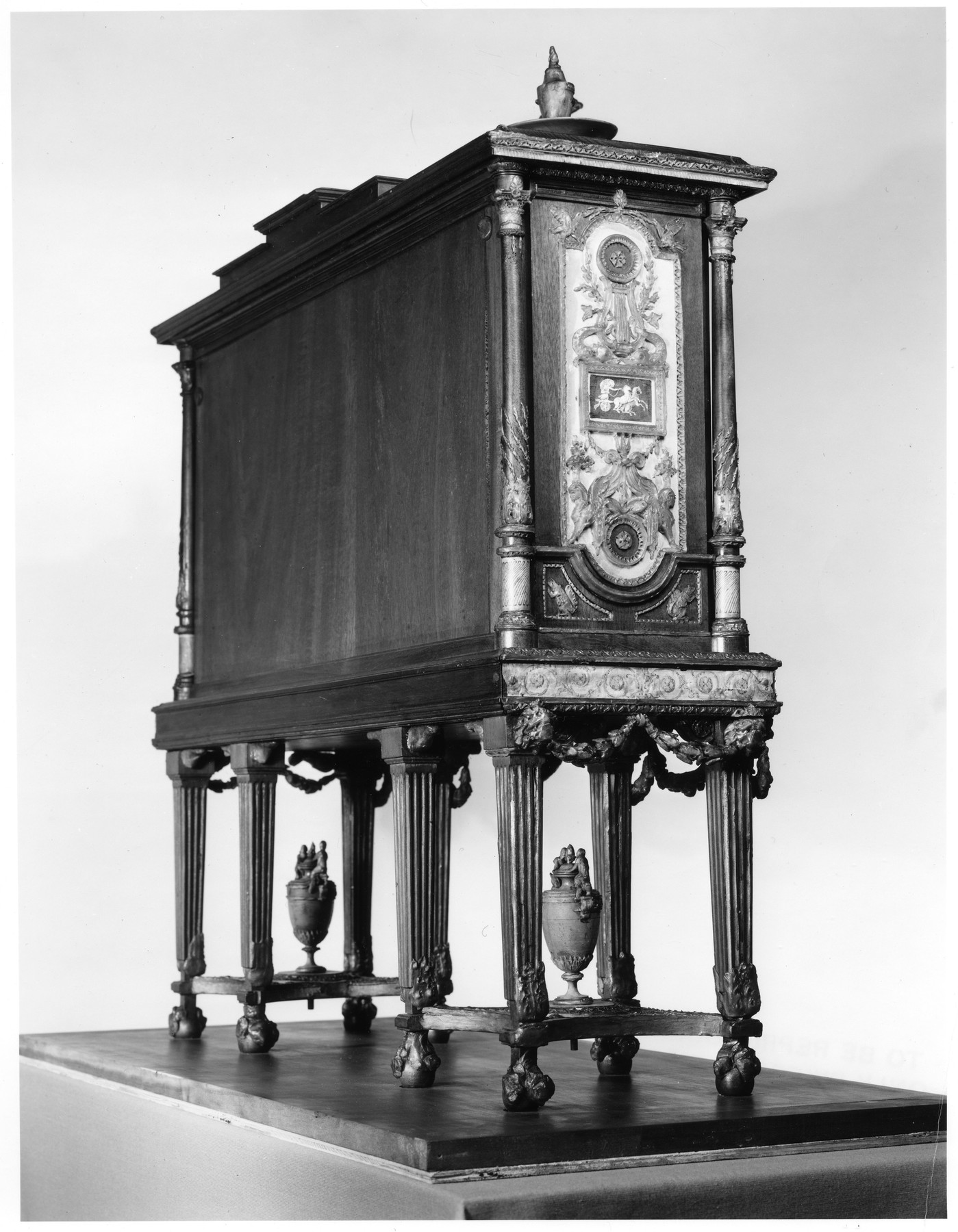Model for a Royal Jewel Cabinet
Dugourc entered this model in a contest held in 1787 to choose a design for Queen Marie-Antoinette's new jewel cabinet at the palace of Versailles. The jury selected another entry which was constructed the following year and is now in the Queen's bedroom in the palace. Dugourc, a multi-talented designer, received commissions from the comte de Provence (Louis XVI's brother and the future Louis XVIII) and from both Paul I and Catherine the Great of Russia as well as from Gustavus III of Sweden.
The Walters piece, an extremely rare model for a royal commission, reflects the prevailing neoclassical style in the use of such motifs as caryatids (pilasters in the form of human torsos), Greek sphinxes, delicate "rinceaux" (scrollwork), and lyres. Encased in the roundels are the monograms of Louis XVI and Marie Antoinette.
Provenance
Provenance (from the French provenir, 'to come from/forth') is the chronology of the ownership, custody, or location of a historical object. Learn more about provenance at the Walters.
Marie Antoinette, Versailles, 1787, by commission; Mme Lelong (?); H. W. Harding; Henry Walters, Baltimore, July 11, 1911, by purchase; Walters Art Museum, 1931, by bequest.
Exhibitions
| 2014-2016 | From Rye to Raphael: The Walters Story. The Walters Art Museum, Baltimore. |
| 1999-2000 | Vive la France! French Treasures from the Middle Ages to Monet. The Walters Art Gallery, Baltimore. |
Geographies
France (Place of Origin)
Measurements
H: 31 × W: 27 3/8 × D: 9 1/4 in. (78.7 × 69.5 × 23.5 cm)
Credit Line
Acquired by Henry Walters, 1911
Location in Museum
Not on view
Accession Number
In libraries, galleries, museums, and archives, an accession number is a unique identifier assigned to each object in the collection.
In libraries, galleries, museums, and archives, an accession number is a unique identifier assigned to each object in the collection.
65.20








